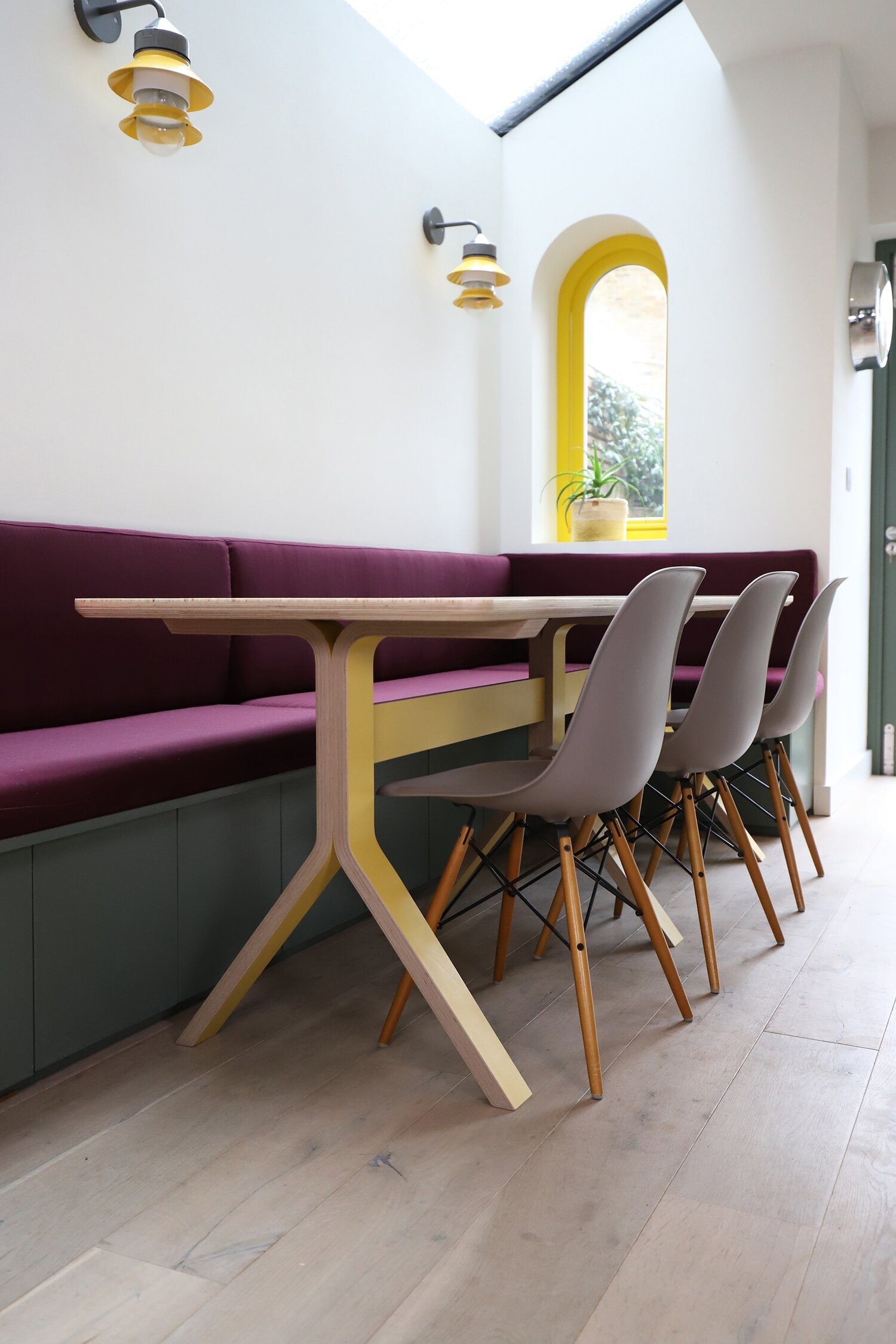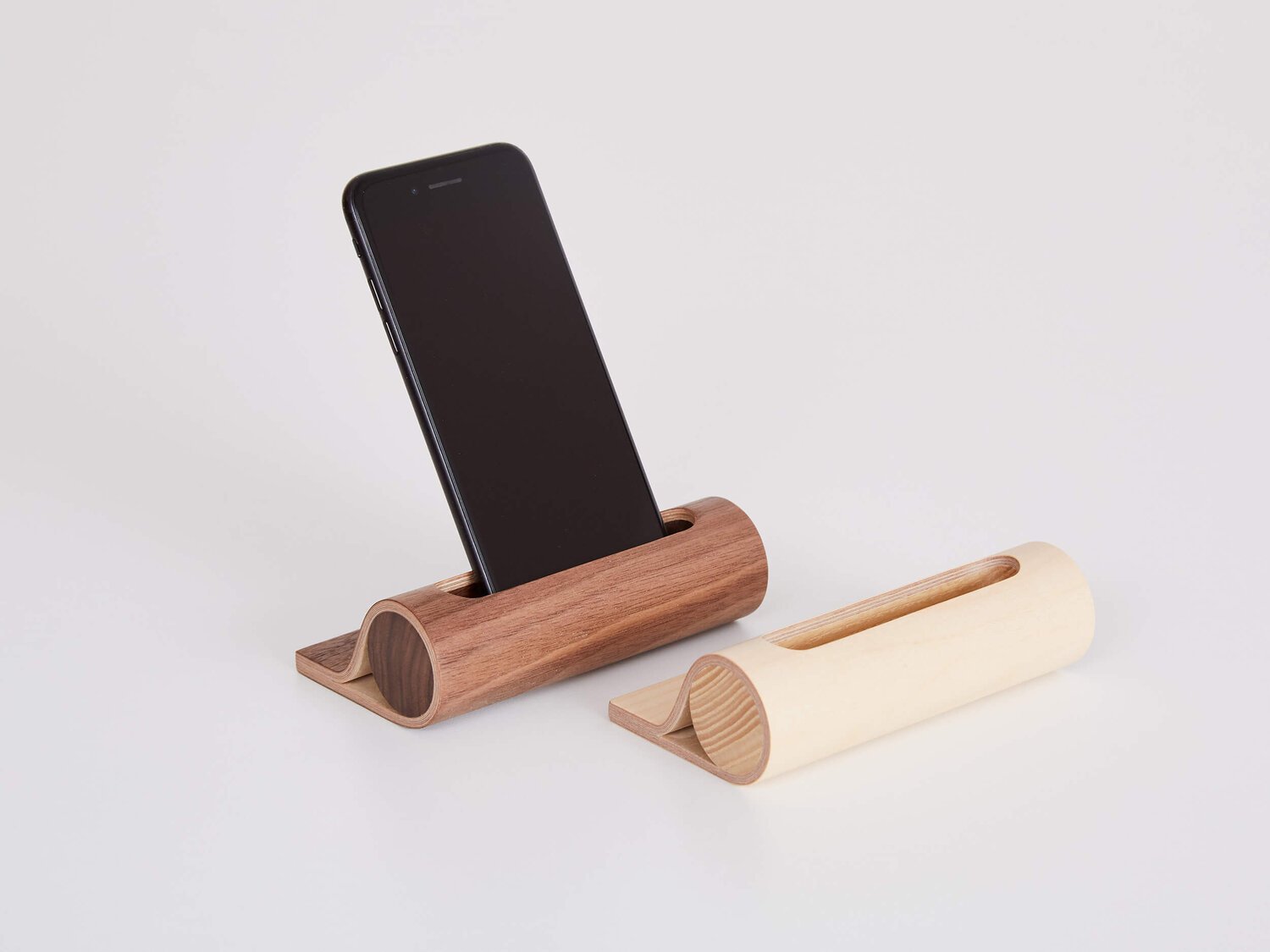Developing our iconic Wave Joint
First introduced in 2017, the wave joint has since become synonymous with Lozi’s style. Elegant, minimalist and fun, this curved detail now takes centre stage as the star of the Wave Collection - a versatile selection of six pieces of furniture and accessories which celebrate the wave joint.
The story of the wave joint began in 2017, when Lozi founder Soroush was developing new product ideas, and was looking at the possibility of creating a candle holder that held the candles snuggly in place between the waves of wood. The concept was centred around smooth plywood curves, made by bending very thin sheets of plywood around a shape to create a curve in the wood. However, after working on the design for the tealight holder, it became clear that this experimental new technique had the potential to become something really exciting, and so the Lozi team set about seeing how far this concept could go, not yet knowing where it would take them.
As with any new idea, development begins with some sketches which are transferred onto a computer. Using digital imaging programmes, the Lozi team worked to create possible iterations of the bent plywood curve, planning how they could be physically constructed. Drawing things as 2D images is an essential part of the thought process, as it allows the designer-makers not only to sketch ideas and play with form, but also serves as the base on which to visualise how a product might then be used. It was at this point that the idea of this curve transforming into a joint began to form.
Then we had to find out if the technique would work - this is where prototyping came in. The whole team was involved from the very start of this project, with Soroush and his wife even making prototypes around the kitchen table. The aim was to create a as tight a curve as possible, to test the limits of this new experimental form, curving thin sheets of plywood around a dowel off-cut. There were points in the early stages of development where it looked like it might not be possible to bend plywood in this way, but this is why prototyping is such an essential part of the development process - it really is the only way to test the materials and it can also inspire design changes that end up enhancing the final product!
Experimenting with the surface of the plywood eventually led to achieving a perfectly smooth finish, which would be used on the final product.
You can imagine how many tries it took to get plywood to achieve such a tight ratio! But achieving this paved the way for future wave products such as the Wave Stand.
We used dowel off-cuts as a way of utilising studio waste for the design process!
The key was getting the ratio correct so as to allow the thin sheets of ply to curve smoothly around an axis, and the only way to achieve this was trial and error. After each prototype that fell apart, a new adjustment was made and the prototype was built again - this lengthy process took 27-28 tries, but when it finally happened, it looked even better than the original drawing, and we realised that it’s shape and structure would work perfectly as a joint.
Now we had the curve, we needed the name. At the time we had just released our Sea table, so the marine theme was on our minds. Deciding on a name wasn’t an easy one, but we focussed on the shape of the product and thought about how the form could inform the process. And so the Wave Joint was born - it does look like a wave after all!
During the design process we spent a lot of time considering how it would be used, and we knew that it would provide an extra 35-40mm of height on a flat piece of plywood, which allows other pieces - such as dowels - to be securely attached. This meant that we could join thinner shelves to each other without worrying about their functionality or stability. The result is a lighter piece that is very sturdy, and has the added elegance and intrigue of the wave joint.
At this point it was only weeks before Clerkenwell Design Week 2017, so time was short if the final product was to be ready in time. We had the finished wave joint, and we wanted to create something eye catching and bold which would make full use of the design. The joint is very much functional and structural so it’s not just a visual feature or a detail that we would add to a piece just to make it beautiful. We designed the Wave Shelving system based on these core ideas, as an elegant storage solution which beautifully celebrated the wave joint.
The Wave shelving system is one of our most popular products and often features in our House of Lozi projects, such as here in the beautiful bedroom of our lovely client Vicky.
We first launched our Wave Shelving System at CDW17, and it’s been a best seller ever since.
The Lozi stand at Clerkenwell Design Week 2017.
We presented the Wave Shelving System at CDW 17 and it became an instant hit. Since then we’ve developed six more products based on this joint and the journey continues as the Wave Collection family continues to grow! The versatility of this beautiful joint lends itself to both large and small products, and the collection now features pieces from the elegant Wave Sideboard with Wave Shelving, to the beautiful comma shaped Wave phone stand.
The joint has proven to be very popular, and features and as we continue to refine and develop it, the next stage is to look into making it possible to flat-pack it, so that it can be sent across the UK and internationally, and shared with clients all over the world.
Lozi’s wave stand features the tightest radius of any wave joint in the collection.
Our Wave Sideboard with Wave Shelving is one of our most popular products.














